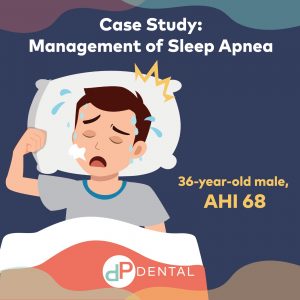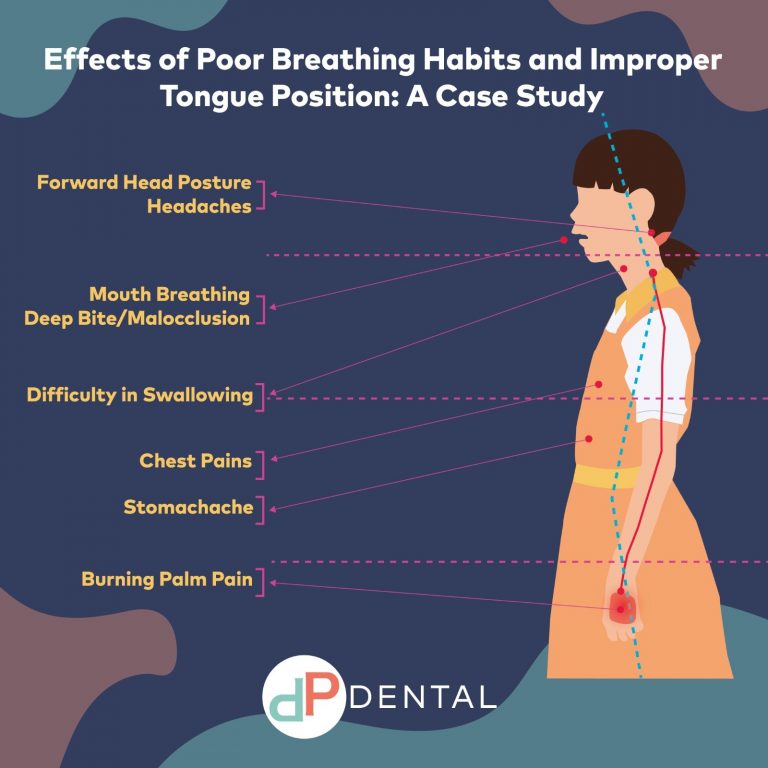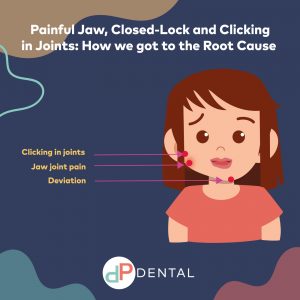However hard Priya tried, she found herself struggling to get a good night’s rest. She would often wake up with a swollen face, clenching her jaw tightly. She couldn’t figure out why she was yawning so much and feeling tired all the time!
Priya also noticed that her jaw joints and muscles hurt, and there was some pain in the temple and neck. To add to this, she had a swallowing problem and found it more challenging to eat. Priya couldn’t figure out why through all this, she was also gaining a lot of weight, and no amount of dieting was working.
Figuring out she needed to see a dentist, Priya visited 19 dentists Before coming to DP Dental.
When Priya came to us, as always, we knew we needed to get to the root cause of the problems.
Painful jaw joints, facial swelling, clenching or grinding of the teeth are signs that point to temporomandibular disorder (TMD). TMD is a condition that affects the movement of the jaw.
In Priya’s case, we noted a couple of key issues:
Her teeth alignment on the right side was not ideal and was causing problems. Typically, the line between your two upper front teeth and your lower front teeth should coincide, but Priya’s didn’t.
Then we took a 2-step approach to treat Priya.
Phase 1
Waking up with sore jaws is often a sign of clenching and grinding at night.
The first step of Priya’s treatment was to determine the teeth alignment. We found the position where her upper and lower teeth fit together correctly. Then, we created the splint (orthotic). An orthotic is a customised orthopaedic device worn in the mouth to realign joints, including the jaw joints and neck joint. It offers a balanced and neutral repositioning effect to aid in muscular and joint pain relief.
To address Priya’s swallowing and breathing issues, we put her on Myofunctional therapy to address this root problem. Myofunctional therapy combines physical therapy exercises for the mouth, tongue, and face muscles to improve chewing, swallowing and breathing.
The result: Priya could already feel a lot of improvement after the first phase of treatment. She shared that the myofunctional training and the tongue exercises improved her swallowing habits and posture.
Phase 2
Our last phase of treatment was to use Invisalign to fix her teeth alignment problem.
The result: Priya was finally pain-free! Our combination of Invisalign, myofunctional therapy and TMD management helped her tremendously. Most surprising was that Priya had lost about ten and a half kilos in just two and a half months! The reason for this was that she was finally breathing and sleeping better. She was no longer waking up tired and had so much more energy.
Priya today
Priya’s transformation continues to this day. What’s best is that she has regained her confidence!
Our Secret to Better Oral Health
Priya could improve her health because she changed her oral habits and got proper care addressing the root cause of her problems. Remember that early intervention can save pain, time and money.
If you have jaw or neck pain like Priya, trouble opening your mouth wide or pain in or around your ears, you might be having Temporomandibular disorder (TMD). At DP Dental, we pay close attention to your dental, postural and sleep habits and patterns, so we can treat your TMD at the source safely.
Dr Yue Weng Cheu has spent more than four years training in the USA and has been helping patients like Priya for more than ten years now. He has also been imparting this knowledge to other dentists internationally.
If you have a concern, do call us on +65 6282 0122 to schedule a quick call with Dr Yue or visit our website at https://www.dpdental.com/tmj-disorder-treatment-singapore/ to schedule an appointment.




